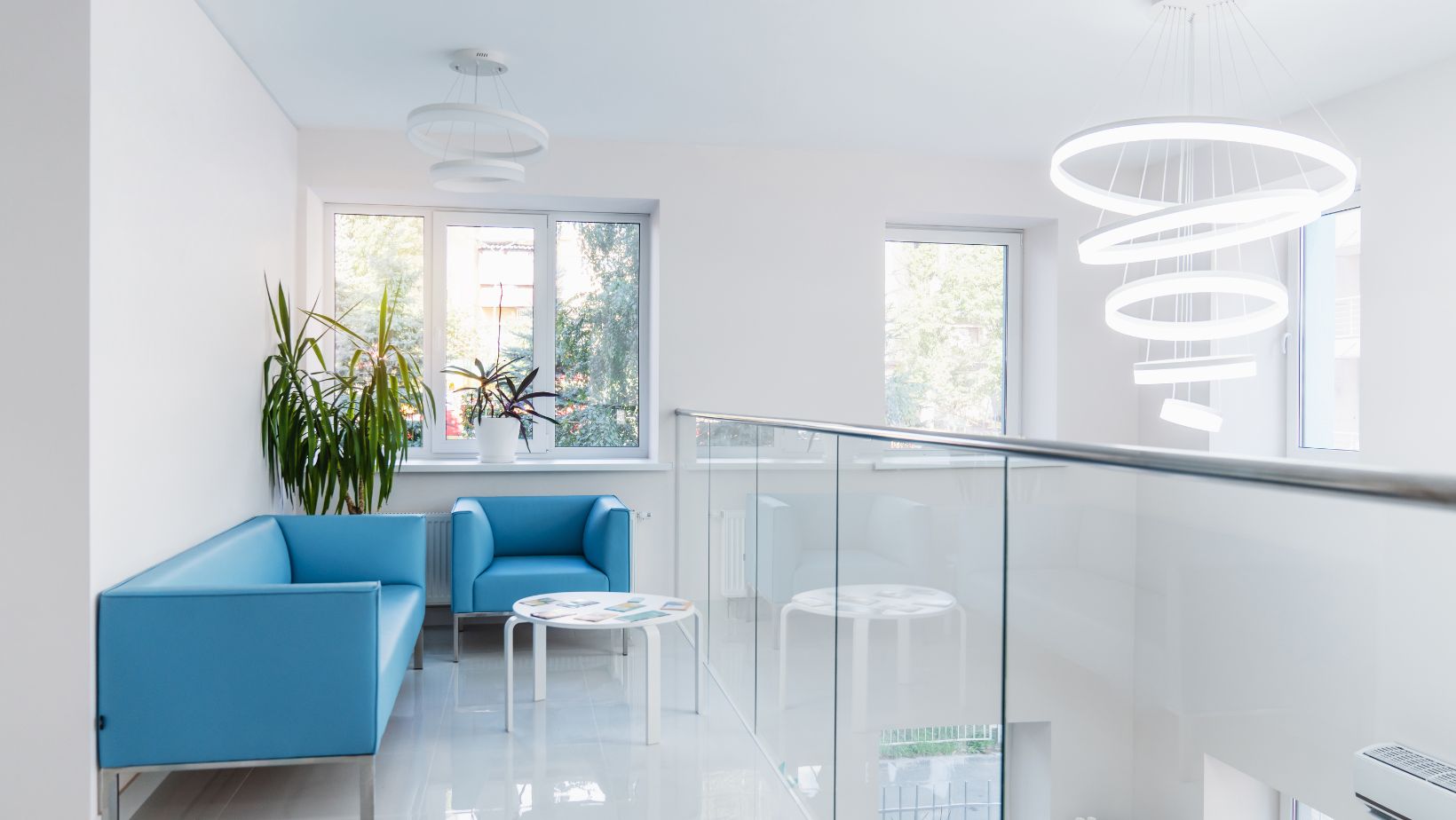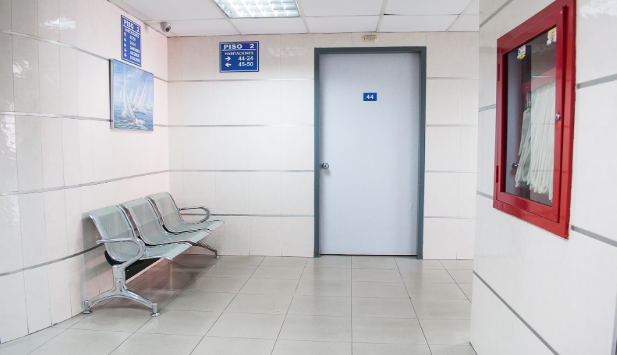Opening A Clinic? Here’s How To Make Patients Feel Comfortable

If you’re planning to open a clinic, you’re likely passionate about providing quality healthcare services to your community. However, it’s not just about offering medical expertise – creating a comfortable and welcoming environment for your patients is equally important. Patients who feel at ease are more likely to trust your clinic, return for follow-up visits, and recommend your services to others. So, here are some key strategies to ensure that your clinic becomes a place where patients feel comfortable from the moment they walk in.
A Warm and Inviting Reception Area
Your clinic’s reception area is the first point of contact for your patients, so it’s essential to make a great first impression. When redesigning the waiting area of your clinic, consider investing in modular reception chairs, which can be easily rearranged to accommodate varying numbers of patients. So, make sure to incorporate the following to create a warm and inviting space:
- Comfortable Seating: Ensure that your waiting area is equipped with comfortable chairs, well-cushioned and clean, to help patients relax.
- Ample Lighting: Adequate natural and artificial lighting can brighten up the area and create a more welcoming atmosphere.
- Art and Decor: Display artwork and decorations that are soothing and non-threatening, such as nature-inspired paintings or calming colors.
Pain Management and Comfort During Procedures
Patients often feel anxious when facing medical procedures. To make these experiences more comfortable, consider implementing pain management and comfort measures. This may include using topical anesthetics before injections, explaining procedures thoroughly to reduce anxiety, and offering relaxation techniques or music in treatment rooms. Ensuring that your patients are comfortable during medical procedures not only reduces their anxiety but also contributes to a more positive overall experience.
Topical Anesthetics for Pain Control
Utilizing topical anesthetics before injections or minor surgical procedures is a widely recognized method to reduce discomfort. These numbing agents, applied to the skin, alleviate the initial sting of injections, making the experience considerably more bearable for patients. By incorporating this approach, you not only reduce pain but also demonstrate your commitment to patient comfort and well-being.
Comprehensive Procedure Explanations
Thoroughly explaining medical procedures to patients is an effective way to alleviate their anxiety. Take the time to walk them through each step, clarifying what to expect and addressing any questions or concerns they might have. By providing this information, you empower your patients to feel more in control of their situation, fostering a sense of trust and reassurance.
Relaxation Techniques for Stress Management
Offering relaxation techniques, such as deep breathing exercises or guided imagery, can help patients manage their stress and anxiety during procedures. Incorporating these techniques into your clinic’s practices can create a calming atmosphere, enabling patients to better cope with the emotional and physical aspects of medical interventions.
Music and Ambient Comfort in Treatment Rooms
Enhancing the ambiance of your treatment rooms with soothing music, comfortable lighting, and calming decor can significantly improve the patient experience. These small touches create a more relaxed environment, distracting patients from any discomfort they may be feeling during procedures. Additionally, it helps shift their focus towards a positive experience, making them more likely to return for future care.
Efficient Appointment Scheduling
Efficient appointment scheduling not only reduces wait times but also demonstrates your respect for your patients’ time and needs:
- Online Booking: Implement an online booking system to allow patients to schedule appointments at their convenience, reducing phone call wait times.
- Timely Notifications: Send appointment reminders via text or email to ensure patients are well-prepared for their visit and don’t feel rushed.
- Streamlined Check-In: Make the check-in process as smooth as possible to minimize paperwork and waiting times.
Flexible Scheduling Options
To cater to the diverse needs of your patient base, offer flexible scheduling options. This could include extended office hours on certain days, weekend appointments, or same-day urgent care slots. By providing these choices, you show consideration for your patients’ varying schedules and ensure that they can access your services without unnecessary delays or disruptions to their daily routines.
Friendly and Compassionate Staff
The demeanor of your staff greatly influences patients’ comfort levels. Train your team to be friendly, compassionate, and understanding:
- Greet Patients Warmly: Encourage staff to greet patients with a warm smile and a friendly “hello” as they enter the clinic.
- Effective Communication: Ensure staff communicates, listens attentively, and addresses patient concerns with empathy.
- Patient Privacy: Emphasize the importance of respecting patient privacy and confidentiality at all times.
Thoughtful Waiting Room Amenities
Consider going the extra mile to make your clinic’s waiting room a pleasant place to be. This involves providing thoughtful amenities that cater to your patient’s comfort and needs. Magazines, books, and television can help pass the time for patients waiting to see the doctor.
A small refreshment area with water, tea, and coffee can go a long way in making patients feel at ease. Additionally, free Wi-Fi access can help patients stay connected while they wait, making the experience more enjoyable.
Cleanliness and Sanitation
A clean and hygienic clinic is essential for patient comfort and safety. Pay attention to cleanliness at all levels:
- Regular Cleaning Routine: Establish a strict cleaning routine to maintain a spotless environment in the waiting area, examination rooms, and restrooms.
- Sanitization Stations: Provide hand sanitizing stations for patients and staff to encourage good hygiene practices.
- Infection Control: Train your staff on infection control measures to minimize the risk of spreading illnesses within the clinic.
Personalized Care and Attention
One of the most effective ways to make patients feel comfortable is to provide personalized care and attention. Train your staff to address patients by name and inquire about their well-being beyond their immediate medical concerns. Demonstrating a genuine interest in their lives and health can help build trust and rapport.

Moreover, consider sending follow-up emails or making courtesy calls after appointments to check on their progress or answer any additional questions. These small gestures can make patients feel valued and cared for, leading to a stronger patient-provider relationship.
By focusing on a welcoming reception area, efficient appointment scheduling, friendly staff, cleanliness, thoughtful waiting room amenities, personalized care and attention, and pain management during procedures, you can create an environment where patients feel genuinely cared for. When patients feel comfortable and respected, they are more likely to have trust in your clinic and return for future care, establishing a thriving and reputable healthcare practice.
-
Personal Finance1 year ago
How Do I Find My UCAS ID Number?
-
Success6 years ago
Consistency: The Key Ingredient to Success
-
Personal Finance1 year ago
What Does Conditionally Approved Mean For An Apartment?
-
Motivation3 years ago
How To Become a More Organized Person?
-
Others5 years ago
Work Health and Safety: 8 Reasons to Maintain a Clutter-free Office
-
Entrepreneurs4 years ago
Why Diversity is Key in Business Marketing
-
HK Pools1 year ago
The HK Pools Forum Comunity Jos Markotop 2D Warna Kuning – A Great Way to Stay Connected
-
Sport2 years ago
What Makes Soccer Betting So Great?




























